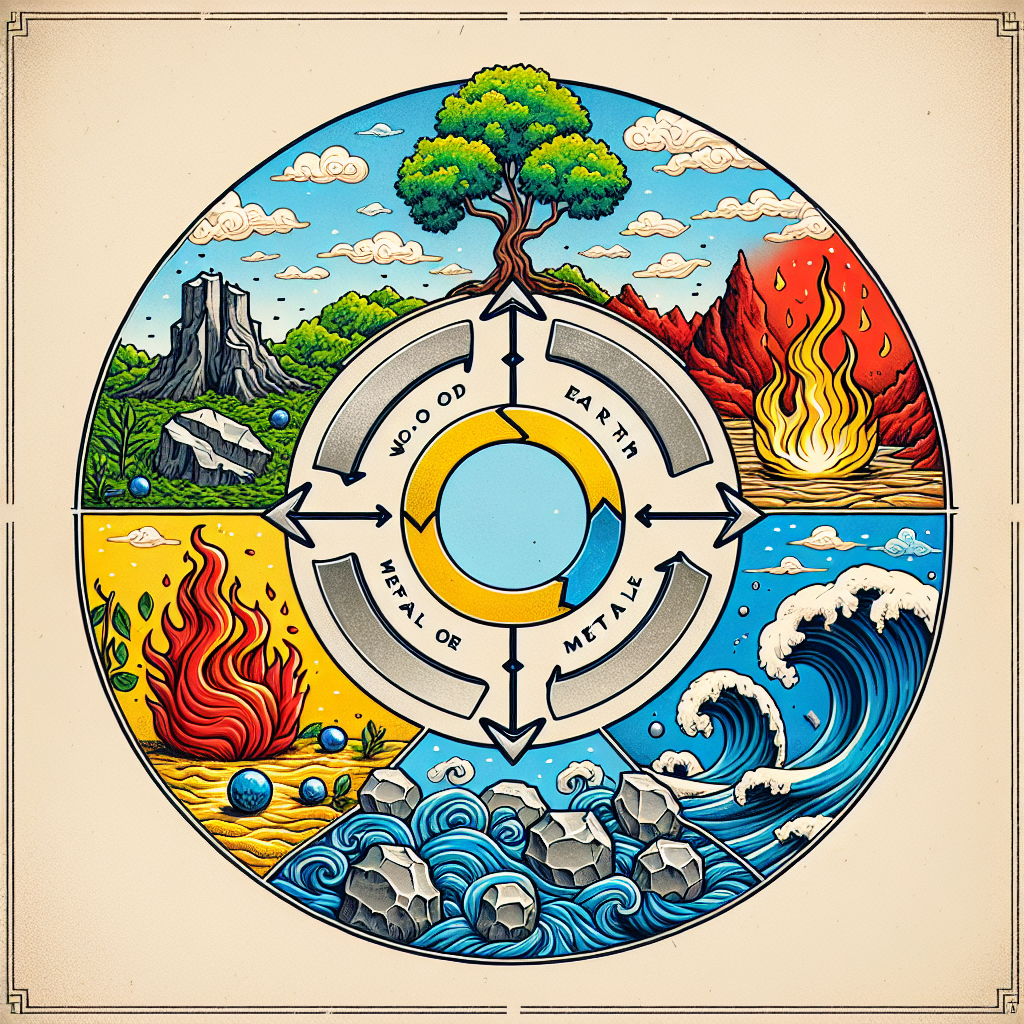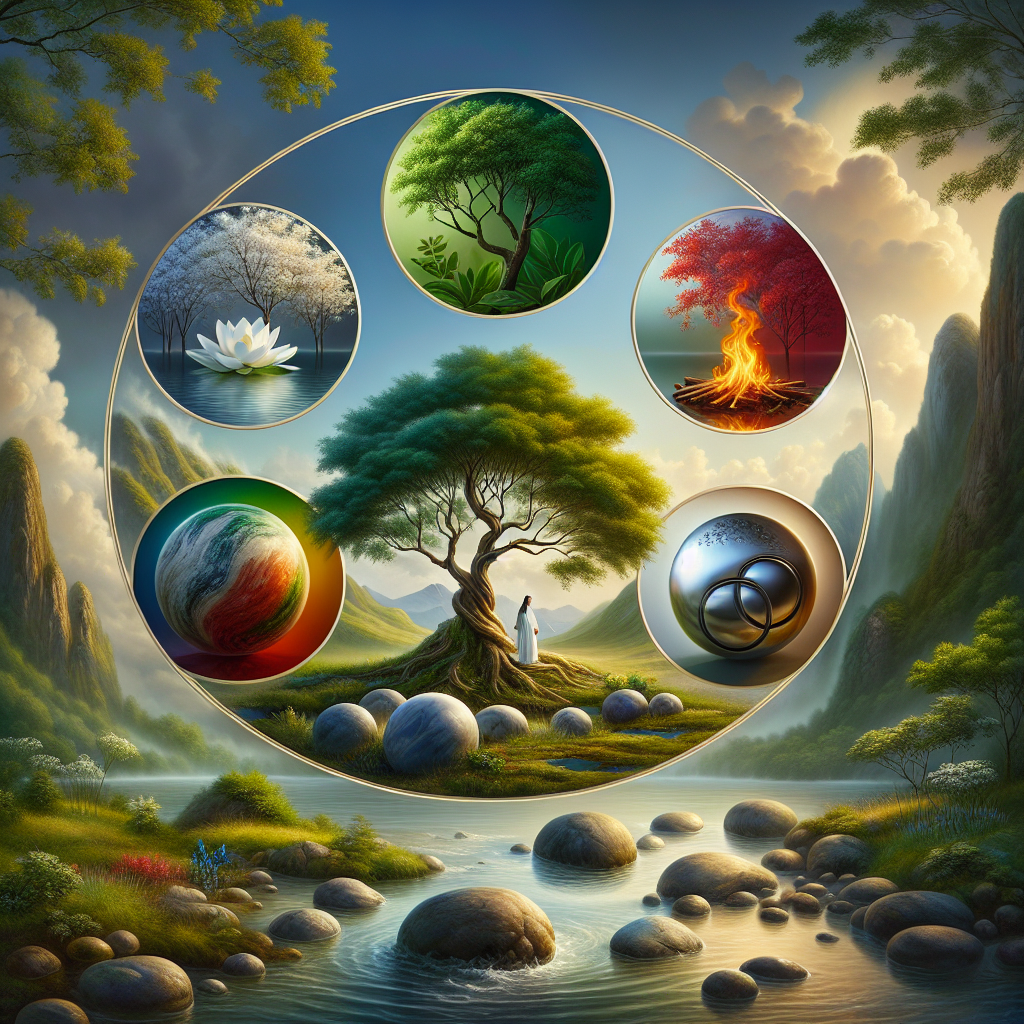Have you ever noticed how your body craves different foods as the seasons change? There’s something deeply intuitive about reaching for a warm, hearty soup in winter or a refreshing salad in summer. This natural inclination is no coincidence—it’s actually rooted in ancient wisdom that’s been guiding human health for thousands of years.
The Five Elements Diet, a cornerstone of Traditional Chinese Medicine (TCM), offers a profound yet practical approach to nourishing our bodies in harmony with nature’s rhythms. Dating back over 2,000 years, this dietary philosophy views food not just as fuel, but as medicine that can balance our internal energies and support optimal health throughout the changing seasons.
If you’ve been exploring natural wellness approaches or searching for a more balanced lifestyle, you’re not alone. Many health-conscious individuals are rediscovering this ancient secret that offers a refreshing alternative to one-size-fits-all diet trends. The beauty of the Five Elements Diet lies in its personalized approach—recognizing that each of us has unique constitutional needs that shift with the seasons.
Understanding the Five Elements Theory
At the heart of the Five Elements Diet is the elegant system of Wood, Fire, Earth, Metal, and Water—fundamental energies that TCM believes flow through nature and our bodies. Each element corresponds to specific organs, emotions, flavors, and food types, creating a comprehensive framework for understanding how different foods affect our wellbeing.
Wood Element: Associated with spring, the liver, and gallbladder. Wood energy is about growth and expansion. Foods with a sour flavor support the Wood element, helping to cleanse and detoxify the body. Think of lemon, vinegar, pickles, and green leafy vegetables. When your Wood element is balanced, you’ll feel decisive and creative.
“The liver is particularly active during spring,” explains TCM practitioner Lily Chen. “Eating sour foods like sauerkraut or a splash of apple cider vinegar in water helps move liver Qi, supporting its natural detoxification processes.”
Fire Element: Connected to summer, the heart, and small intestine. Fire represents joy and passion. Bitter foods like dark leafy greens, coffee, and dark chocolate support the Fire element by cooling excess heat and calming the spirit. A balanced Fire element promotes healthy circulation and emotional well-being.
Earth Element: Linked to late summer, the spleen, and stomach. Earth embodies nourishment and stability. Sweet flavors (not artificial sweetness, but the natural sweetness of whole grains, sweet potatoes, and fruits) strengthen the Earth element, supporting digestion and energy production. When Earth is balanced, you’ll experience consistent energy and clear thinking.
Metal Element: Associated with autumn, the lungs, and large intestine. Metal represents letting go and taking in the new. Spicy or pungent foods like onions, ginger, and garlic support the Metal element by clearing and protecting the respiratory system. A balanced Metal element helps with immunity and emotional processing.
Water Element: Connected to winter, the kidneys, and bladder. Water embodies rest and restoration. Salty foods like seaweed, miso, and bone broth nourish the Water element, supporting kidney function and vital energy reserves. When Water is balanced, you’ll feel courageous and have good stamina.
Understanding these connections helps explain why certain foods feel so right at particular times. It’s not just habit or culture—it’s your body recognizing what it needs to maintain balance as external conditions change.
Eating With the Seasons: The Natural Rhythm of the Five Elements Diet
One of the most beautiful aspects of the Five Elements Diet is its emphasis on seasonal eating. By aligning our food choices with nature’s cycles, we support our bodies’ natural tendencies during each season.
Spring: Embracing the Wood Element
As nature awakens and new growth emerges, our bodies naturally seek renewal too. Spring is the perfect time to support your liver—the organ associated with the Wood element—by incorporating more sour foods and young, leafy greens.
Try this: Add more asparagus, baby greens, sprouts, and lightly sautéed vegetables to your meals. Include small amounts of sour foods like lemon or lime juice, vinegar-based dressings, and fermented vegetables. These foods help move stagnant energy accumulated during winter and support the liver’s detoxification processes.
“In spring, I recommend my patients eat more green vegetables and add a little fermented food to their meals,” says nutritionist Sarah Wong. “It’s amazing to see how this simple adjustment can increase energy levels and mental clarity after the heaviness of winter.”
Summer: Nurturing the Fire Element
Summer’s heat naturally corresponds to the Fire element, which governs the heart and small intestine. The ideal summer diet includes cooling foods that prevent excess heat while supporting the heart’s function.
Try this: Enjoy plenty of fresh fruits and vegetables with high water content like watermelon, cucumber, and tomatoes. Include some bitter greens like arugula and radicchio to cool the system. Light cooking methods like quick stir-frying or steaming preserve the cooling nature of foods better than heavy cooking.
Late Summer: Strengthening the Earth Element
The transitional period of late summer (sometimes called the “fifth season” in TCM) relates to the Earth element and the digestive organs. This is when we harvest the abundance of crops, and similarly, our bodies need to efficiently transform food into energy.
Try this: Focus on easily digestible foods like well-cooked rice, millet, squash, and sweet potatoes. Moderate amounts of naturally sweet fruits support the spleen and stomach. Soups and stews with warming spices like ginger and cinnamon help prepare the digestive system for the coming cooler months.
Autumn: Supporting the Metal Element
As leaves fall and nature contracts in autumn, our bodies begin to gather energy inward. The Metal element governs the lungs and large intestine, making this the perfect time to focus on respiratory health and proper elimination.
Try this: Include more white foods like cauliflower, turnips, and pears, which TCM associates with lung health. Warming, pungent spices like ginger, garlic, and white pepper help protect against seasonal respiratory challenges. Root vegetables provide grounding energy as we move toward winter.
Winter: Replenishing the Water Element
Winter’s stillness connects to the Water element and the kidneys, which TCM considers the source of our fundamental life energy. Winter eating should focus on conservation and building reserves.
Try this: Enjoy warming foods like soups, stews, and slow-cooked meals. Dark foods like black beans, kidney beans, and black rice nourish the Water element. Small amounts of salty foods like miso, seaweed, and bone broth support kidney function and help maintain proper fluid balance during dry winter months.
By adjusting your diet with each season, you’re not fighting against nature but working with it. This approach helps your body maintain balance despite external changes—a key principle of the Five Elements Diet.
Health Benefits of the Five Elements Diet
The holistic approach of the Five Elements Diet offers numerous health benefits that extend beyond simple nutrition:
Improved digestion: By eating seasonally appropriate foods prepared in ways that enhance digestibility, many people experience fewer digestive complaints. The Earth element’s focus on proper food transformation means better nutrient absorption and energy production.
Balanced energy levels: Unlike diets that create energy spikes and crashes, the Five Elements Diet promotes steady, sustainable energy throughout the day. “Many of my clients report more consistent energy when they align their eating with Five Elements principles,” notes holistic nutritionist James Lin. “They’re no longer experiencing that mid-afternoon slump.”
Stronger immunity: The Metal element’s connection to the immune system means that following seasonal recommendations can help strengthen your body’s natural defenses. Research shows that certain foods recommended in the Five Elements Diet, like garlic, ginger, and mushrooms, contain compounds that support immune function.
Better adaptation to climate changes: Each element provides guidance on how to balance your body through seasonal transitions, potentially reducing seasonal health issues.
Emotional wellbeing: TCM recognizes the connection between emotions and physical health. By nourishing specific elements, you may find improvements in your emotional state. For example, supporting the Earth element often helps reduce worry and overthinking.
Personalized nutrition: Unlike one-size-fits-all approaches, the Five Elements Diet can be customized based on your constitutional type and current imbalances, making it highly adaptable to individual needs.
A study published in the Journal of Traditional Chinese Medicine found that participants who followed seasonal eating patterns based on Five Elements theory showed significant improvements in digestion, energy levels, and overall wellbeing compared to control groups.
Implementing the Five Elements Diet in Daily Life
Ready to bring this ancient wisdom into your modern kitchen? Here’s how to get started:
1. Discover Your Dominant Element
While we all have all five elements within us, most people have one or two that are naturally stronger or weaker. Identifying your constitution can help you make more targeted dietary choices. Common signs include:
- Wood dominant: You’re decisive, creative, and may experience tension headaches or irritability when imbalanced.
- Fire dominant: You’re enthusiastic, charismatic, and may experience anxiety or insomnia when imbalanced.
- Earth dominant: You’re nurturing, reliable, and may experience digestive issues or worry when imbalanced.
- Metal dominant: You’re precise, organized, and may experience respiratory issues or grief when imbalanced.
- Water dominant: You’re introspective, wise, and may experience fear or lower back pain when imbalanced.
2. Start with the Seasons
If determining your dominant element seems complicated, begin by simply following the seasonal recommendations. This alone can create noticeable improvements in how you feel throughout the year.
3. Experiment with Flavors
Incorporate all five flavors—sour, bitter, sweet, pungent, and salty—into your meals in appropriate proportions. A typical Five Elements meal might include:
- A small fermented side dish (sour)
- A few bitter greens
- Some naturally sweet vegetables or grains
- Warming spices like ginger or garlic (pungent)
- A touch of sea salt or seaweed (salty)
4. Focus on Food Quality
Choose fresh, locally grown foods whenever possible. Minimize processed foods, which lack the vital energy or “Qi” that TCM values. Cook foods appropriately for the season—more raw in summer, more cooked in winter.
5. Listen to Your Body
Pay attention to how different foods make you feel. The Five Elements Diet encourages developing this awareness rather than rigidly following rules. Your body’s needs will change with the seasons, your activity level, and your health status.
“The most powerful aspect of the Five Elements Diet isn’t just what you eat, but developing the intuition to know what your body needs at any given time,” explains TCM nutritionist Maria Chang. “This mindfulness creates a relationship with food that’s both healing and joyful.”
Harmony in Every Bite: The Five Elements Diet and HerbalsZen
The Five Elements Diet beautifully embodies the philosophy we cherish at HerbalsZen—that ancient wisdom and modern understanding can come together to create optimal health. Just as this dietary approach recognizes the unique needs of each person while honoring universal patterns, our EASTCHI AI system blends time-tested Eastern medical knowledge with cutting-edge technology.
EASTCHI AI can help you identify your constitutional type according to Five Element Theory, offering customized nutrition recommendations that change with the seasons and your specific health needs. By analyzing your individual patterns, EASTCHI AI creates personalized dietary guidance that makes implementing the Five Elements Diet simple and effective.
The Five Elements Diet isn’t just about nutrition—it’s about reconnecting with nature’s rhythms and your body’s innate wisdom. When we eat in harmony with the elements and seasons, we’re not following a diet in the conventional sense; we’re participating in an age-old dance with nature that nourishes both body and spirit.
Ready to discover how the Five Elements Diet can transform your relationship with food and enhance your wellbeing through every season? The ancient secret to balanced energy awaits, and with tools like EASTCHI AI, accessing this wisdom has never been easier.




